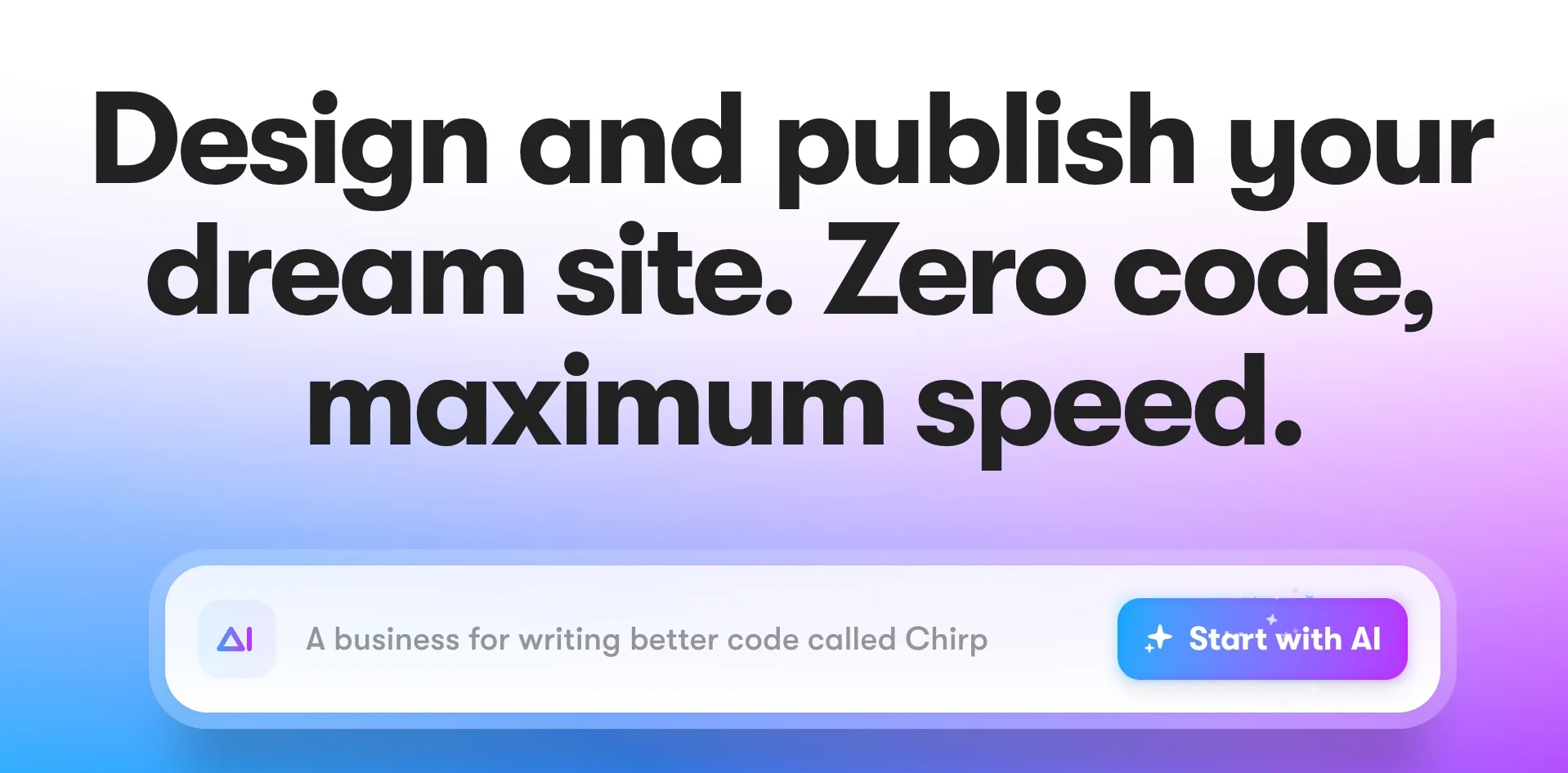Hindsight is 20/20. It's easy to see and understand things clearly after they’ve happened or been proven, but it's much harder to predict or make decisions accurately in the moment.
We’ve seen this happen a lot throughout tech history. Mobile in the early 2000s is a great example. Companies that embraced the change (like Apple) were winners. Those that didn’t (giants like Blackberry and Nokia) are now fun anecdotal stories we tell for nostalgia’s sake. Then we have the buzzwords of 2022 that dominated the tech chatter: crypto and Web3. But the tide has shifted, and AI is now the new belle of the ball. Except, AI is not new at all.
Product teams have used AI for years to build better recommendation systems, detect fraud, predict inputs, and even build self-driving cars. Yet, it was the rise of OpenAI’s ChatGPT and image-generating apps like Freepik AI image generator that brought it to the masses, so much so that it created a sense of FOMO amongst product managers scrambling to figure out if and how they should embed it into their products.
Unfortunately, this often means a “powered by AI” rebrand that brings minimal value to the end user. As we recently discussed in an article about Ingredient Branding, most consumers couldn't care less about the platform you’re building on and what’s under the hood; they care about solving a problem.
In this story, we’ll look at companies that have successfully used AI to improve their core products and help you understand whether investing the resources to do the same makes sense. You know, to avoid the pitfalls of a rather expensive rebranding exercise.
Existing products 🤝 AI
It comes as no surprise that popular products with seemingly unlimited resources jumped at the opportunity of baking AI into their existing tools. Let’s look at examples where the decision genuinely fits in with the product vision rather than solely being used as a marketing tactic.
Notion

Notion was one of the first companies to jump on the AI-that-completes-your-sentences- bandwagon. It announced Notion AI in mid-November last year before ChatGPT was publicly launched. Rather than a tacked-on feature, it complements the core product's objectives.
Notion’s existing product benefits a lot from what the premises of Notion AI are: help you tackle that first draft, act as your hawk-eyed editor, and summarize long documents.
The value added here is clear. You’re already using Notion to write documents and wikis, so being able to outsource the tedious work (like editing and writing the tl;dr) makes your life as a user easier.
Framer

You could arguably say no-code and AI are like cousins. Both can simplify and accelerate the process of building apps, albeit from different angles.
The OG no-code website builder, with a knack for great design, recently announced its take on AI. Framer AI allows users to input what website they want to build (i.e. “A surf shop in Ericeira called Boardwalk”) and get a ready-made website.
Framer didn’t reinvent itself, nor did it try to fit around AI. It simply made it easier for users to get started with their existing product. Their ✨AI-fication✨feels natural and just makes sense.
GitHub

Sitting atop a trove of code data has its perks. For one, you get to create one of the most powerful AI pair programmers.
GitHub’s Copilot has been trained on billions of lines of code and is one of the best-executed AI adoption examples from existing companies. It helps developers write faster, better code and automate mundane tasks.
Separating hype from substance
Every tech enthusiast and their dog is whispering sweet nothings about AI, and it's easy to get swept away in the excitement. But let's be honest here. AI isn't the solution to all your startup's woes. It can be more like adding rocket boosters to a tricycle—impressive, yes, but not exactly practical. Here are some precautionary steps to help you make a more informed decision about whether your product needs it.
Step 1: Identify real problems
Close your eyes and take a breather from the AI buzz. Now, ask yourself—what specific problem will AI solve for your users? Can it help them find support answers faster? Can it help them navigate to a page easier? If you can't pinpoint a clear answer, hold off on that AI infusion. Startups thrive when they address genuine pain points, not when they indulge in tech trends like kids in a candy store.
Consider your users' pain points and needs, and only then assess whether AI can act as the superhero your product deserves. If it doesn't add substantial value, it's time to park that AI spaceship and get back to the drawing board.
Step 2: Data, data, data
Here's a truth bomb—the success of AI hinges on data, and not just any data, mind you. If your startup's data is as sparse as an oasis in the desert, think twice about going AI-crazy.
Without relevant and comprehensive data, AI algorithms turn into expensive, fancy toys that disappoint like a deflated balloon.
You need a solid data foundation before AI can dazzle your users. So, analyze your data inventory, ensure it's well-structured, and collect the necessary pieces.
Step 3: Deep pockets or empty wallets?
Now, let's talk moolah. Implementing AI isn't cheap—it's like hiring an A-list Hollywood actor for your indie film—costly but potentially game-changing.
Before diving headfirst, do some serious math and assess whether your startup's piggy bank can handle the AI investment without causing a financial implosion.
Remember, it's not about having AI or not, but about having AI at the right time and the right way.
Now that we’ve got that out of the way let’s dive into how adding AI to your product could be a boon for your business and users. This will help you decide whether to prioritize it on your roadmap.
Why your product can benefit from AI
Personalized recommendations
The success of the most used mobile app (yes, TikTok) is largely due to its terrifyingly good recommendation system. Moreover, the advancements in AI have paved the way for a new era in visual content creation with the AI video generator, which harnesses the power of machine learning to seamlessly assemble and enhance video footage, offering content creators an innovative and efficient tool for producing captivating visuals
Your product doesn’t have to be a social app to need this, either. In reality, any product that involves content consumption, product discovery, or personalized user experiences can benefit from integrating AI-powered recommendations. E-commerce platforms, news and content aggregators, travel and hospitality platforms, and financial tools, just to name a few.
Natural Language Processing (NLP)
AI-powered NLP can process and understand human language, enabling applications like voice-controlled interfaces, sentiment analysis, and language translation services. If localization and accessibility are among your priorities, it might make sense to add AI to your product in this way.
Another benefit of using NLP is allowing users to navigate your product more easily through tools like command palettes.
Automated content generation
This is possibly the most popular use case, thanks to companies like OpenAI. AI-powered content generators can automatically create personalized emails, product descriptions, and marketing materials. If your existing product has a writing element to it (like taking notes or creating presentations), this is likely something that would offer value to users.
Chatbots and virtual assistants
This one seems like a no-brainer, especially with the various third-party options you can integrate. These can offer instant customer support, answer user queries, and guide users through complex processes. Overall, it can help you cut costs and have your support team work on higher-impact things. Most SaaS customers will find this helpful if implemented in a way that doesn’t make it feel frustrating and cold.
We’ve all virtually screamed at a chatbot before… right?
Fraud detection and security
AI can detect patterns of fraudulent behavior in real-time, enhancing security in financial transactions, online payments, and account authentication processes. This is especially useful if you operate in the financial or legal sector. Just remember, AI’s not perfect and it isn’t going to be right 100% of the time (not yet, at least). Think of it as a few hundred extra pairs of eyes that can spot patterns quicker than you do.
Image and video analysis
AI can analyze images and videos, enabling features like facial recognition, content moderation, object detection, and automatic tagging. This could prove to be a powerful tool in cases where your product deals with a lot of UGC and sensitive information.
Why you might want to think twice
You’re more focused on the marketing push you’ll do rather than how users will benefit from your AI feature.
Might seem obvious, but we can’t reiterate this enough. It’s not worth the effort. Just like adding dark mode isn’t going to bring you product-market-fit magically or get you an Apple Design Award, a feature built only for the mention in the changelog and the temporary slot on your landing page isn’t going to bring you more customers necessarily. Why? Because everything else is now “AI-powered.”
It doesn’t mean as much as it used to.
The novelty is starting to wear off, and unless you have a powerful use case that fits in with your product’s story, appending AI to your product’s name isn’t enough to make customers make the switch. That doesn’t mean you shouldn’t; it just means you can’t rely on it being your product’s main personality trait/selling point.
Conclusion
Adding AI to your product is a massive opportunity if done right. Integrating AI should be guided by your product's unique requirements, user expectations, available resources, and long-term strategic goals. It should feel relevant.
Start small and iterate frequently. Get out an MVP and figure out if and how your users benefit from the change. Talk to them and understand if your AI feature helps solve their problem quicker and more efficiently. Don’t be afraid to unship if something doesn’t work.
Sometimes, a more straightforward approach may be the most appropriate choice for your product's success.















